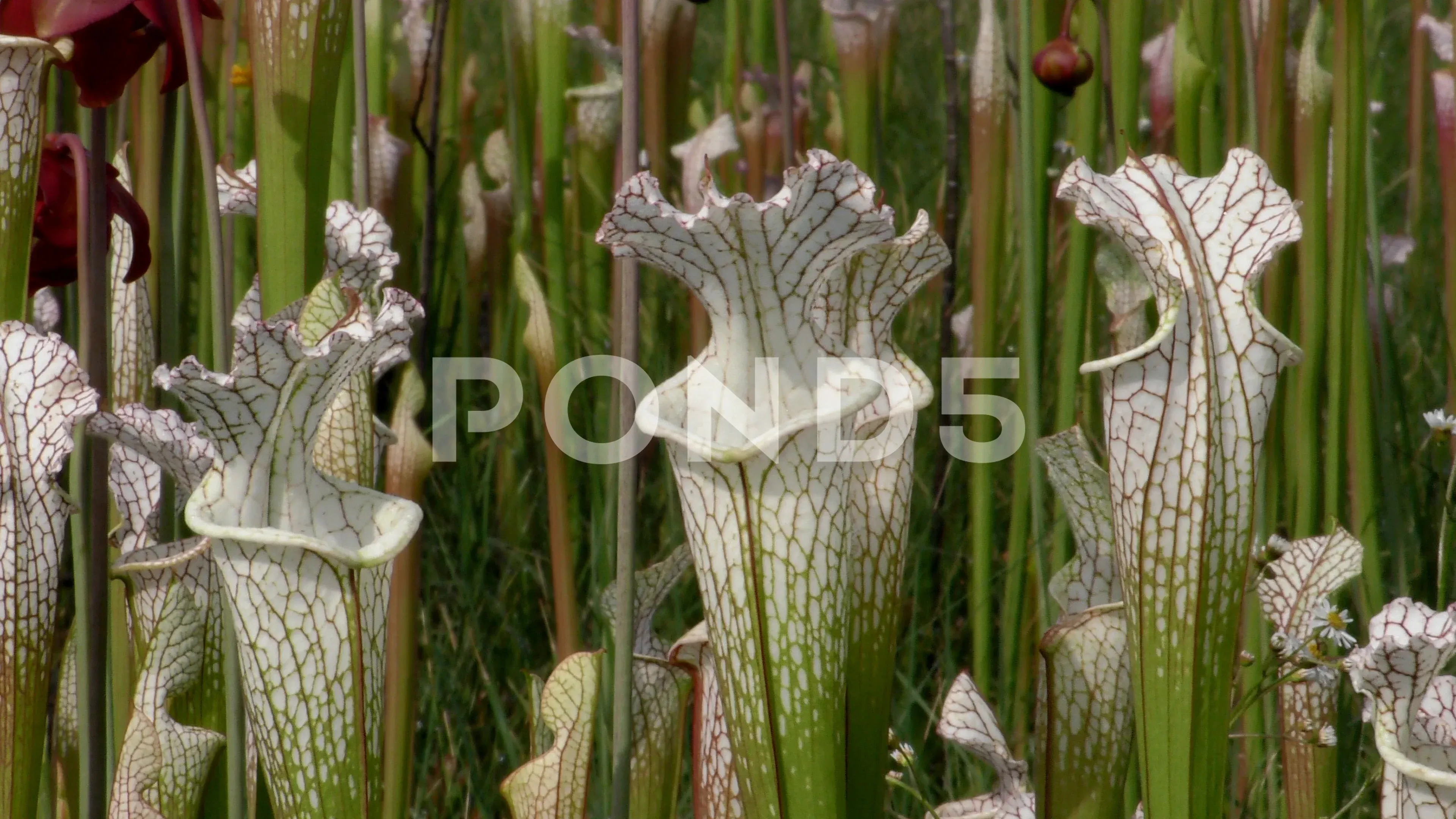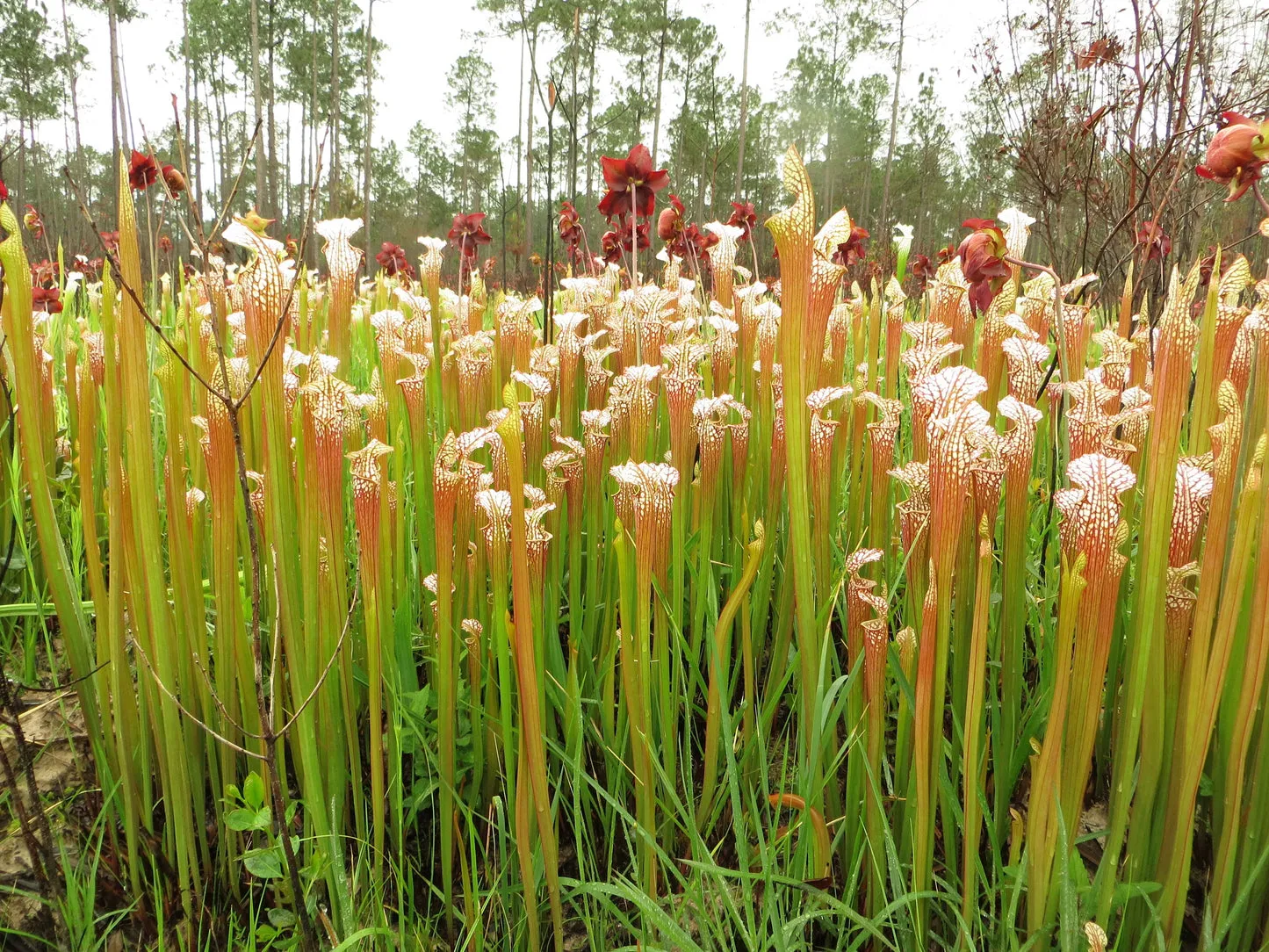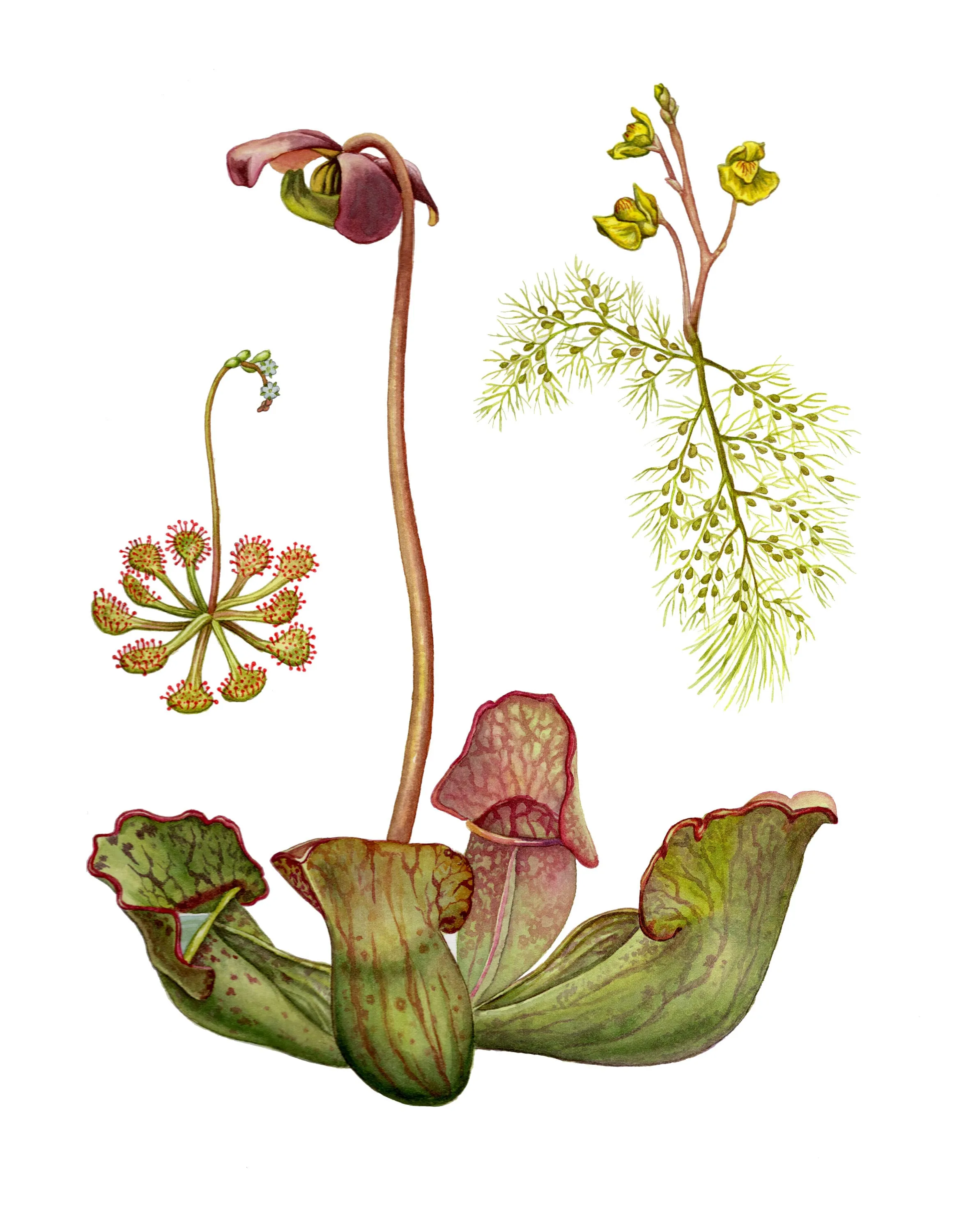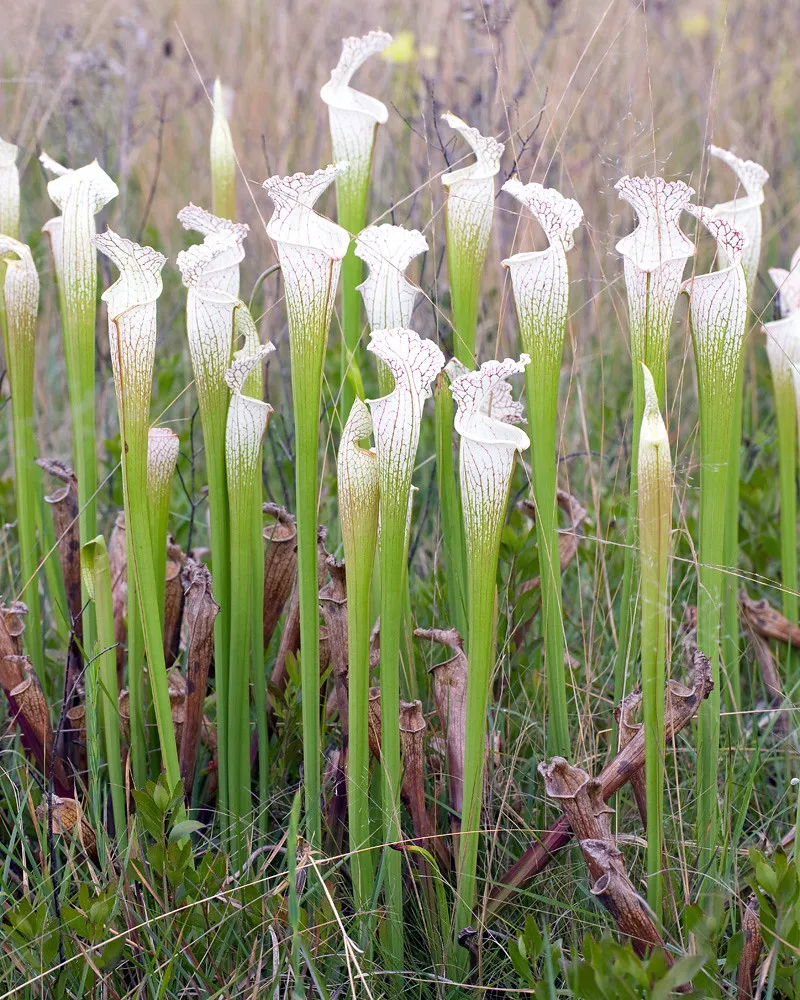White-topped pitcher plant: A Unique Flowering Plant
Flowers come in all shapes and sizes, but the white-topped pitcher plant is a unique flowering plant that stands out from the rest. This carnivorous plant is native to North America and is known for its striking appearance and ability to capture insects for sustenance. In this article, we will explore the white-topped pitcher plant in more detail, including its physical characteristics, habitat, and unique adaptations.
Physical Characteristics
The white-topped pitcher plant, also known as Sarracenia leucophylla, is a perennial plant that grows up to 3 feet tall. Its leaves are long and tubular, resembling a pitcher, hence its name. The upper portion of the leaf is white, while the lower portion is green with red veins. This unique coloration is thought to attract insects to the plant. The pitcher is also covered in tiny hairs that point downwards, making it difficult for insects to escape once they enter the pitcher. The white-topped pitcher plant produces flowers that are typically white or pink in color and bloom in the spring. The flowers are held on tall stems above the leaves and are pollinated by bees and other insects.
Habitat
The white-topped pitcher plant is native to the southeastern United States, where it grows in wetlands and bogs. It prefers acidic soil and requires a constant source of water to thrive. The plant is often found in areas that are too wet for other plants to grow, making it an important part of the ecosystem. The white-topped pitcher plant is also an indicator species, meaning that its presence can indicate the health of the wetland or bog it grows in.
Unique Adaptations
The white-topped pitcher plant is a carnivorous plant, meaning that it captures and digests insects for nutrients. The inside of the pitcher is lined with a slippery substance that makes it difficult for insects to climb out once they enter. The hairs on the inside of the pitcher point downwards, making it difficult for insects to crawl out. The plant also produces digestive enzymes that break down the insects and release nutrients that the plant can absorb. The white-topped pitcher plant has several unique adaptations that allow it to survive in its wetland habitat. Its tubular leaves serve as a way to collect water and nutrients, which are often scarce in wetland environments. The white-topped pitcher plant also has a symbiotic relationship with bacteria that live in the pitcher. These bacteria help to break down the insects and release nutrients that the plant can absorb.
Conservation Status
The white-topped pitcher plant is listed as a species of special concern in several states, including Florida, Georgia, and Mississippi. Its wetland habitat is threatened by development, drainage, and pollution. In addition, the white-topped pitcher plant is often illegally collected from the wild for use in the horticultural trade. The plant is protected by state and federal laws, and it is illegal to collect or disturb the plant without a permit.
Cultivation
The white-topped pitcher plant is a popular plant for cultivation in the horticultural trade. It is often grown in containers with a mixture of peat moss and sand, which mimics its natural wetland habitat. The plant requires a constant source of water and should be kept moist at all times. It is also important to use distilled or rainwater when watering the plant, as tap water can contain minerals that can harm the plant.
Conclusion
The white-topped pitcher plant is a unique flowering plant that is known for its striking appearance and ability to capture insects for sustenance. This carnivorous plant is an important part of the wetland ecosystem and has several unique adaptations that allow it to survive in its habitat. However, the plant is threatened by habitat loss and illegal collection, and it is important to protect and conserve this unique species for future generations to enjoy.
Frequently asked questions about White-topped pitcher plant wallpapers
Q: What is a White-topped pitcher plant?
A: White-topped pitcher plant is a carnivorous plant that belongs to the Sarraceniaceae family. It is commonly found in the southeastern United States.
Q: What is the category of pictures available on your website?
A: The pictures available on our website belong to the "Flowers" category.
Q: How many pictures of White-topped pitcher plant are available on your website?
A: We have a total of 54 pictures of White-topped pitcher plant available for download on our website.
Q: Can I download these pictures for free?
A: Yes, you can download these pictures for free.
Q: What file types are available for download?
A: You can download these pictures in three different file types: .jpg, .png, and .webp.
Q: Can I choose different sizes for the pictures?
A: Yes, you can choose different sizes (width and height) for the pictures.
Q: How does your website determine the right size for mobile visitors?
A: Our website automatically detects the visitor's mobile screen size and chooses the right size for the visitor.
Q: Do I need to create an account to download these pictures?
A: No, you do not need to create an account to download these pictures.
Q: Can I use these pictures for commercial purposes?
A: You will need to check the license of each picture before using it for commercial purposes.
Q: How do I give credit to the photographer?
A: The photographer's name is mentioned in the file name of each picture. You can use that name to give credit to the photographer.























































